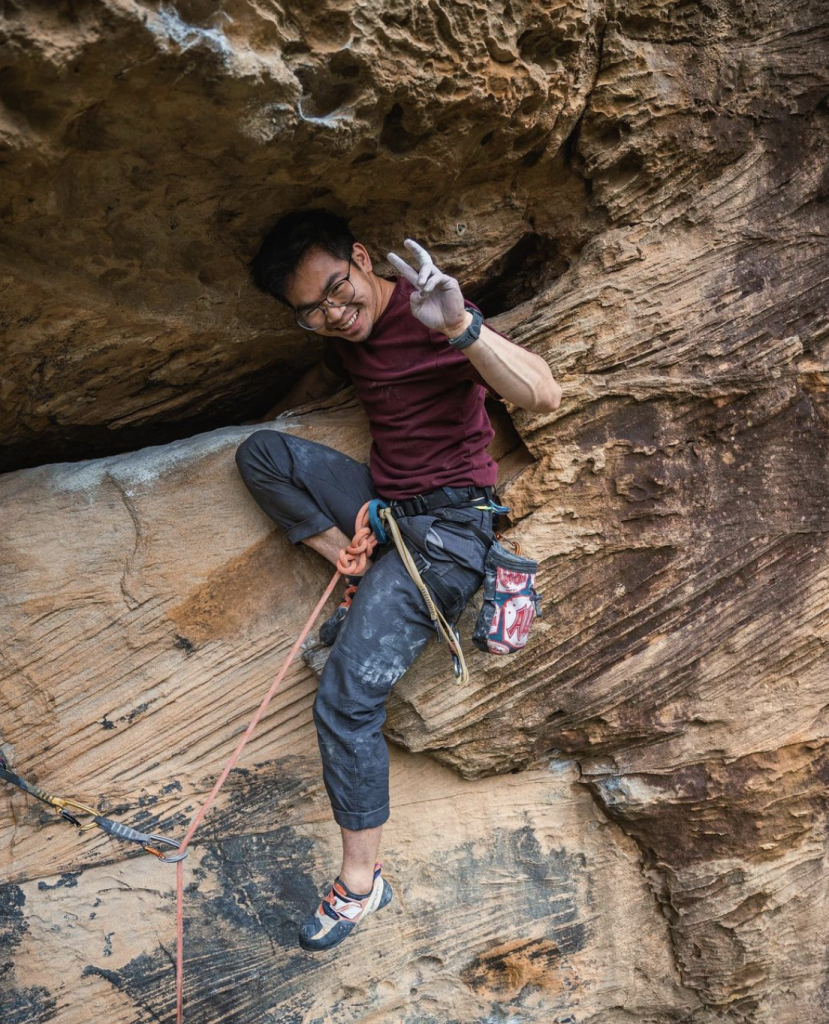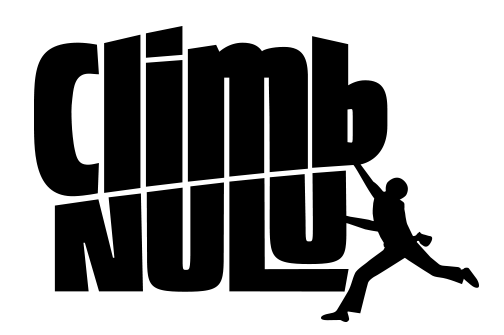Holding Space While Climbing for Connection: Cat Runner, Organizer of Queer and Trans Climbing Club

contact@queerkentucky.com
I’ve always found something beautiful in watching climbers scale massive rocks; the way their powdered fingertips would grip onto tiny ledges of earth. The way they gracefully scale a massive surface. Imagining their fingertips pressing into the rock, making a small impression of their fingers, a little memory that they made their mark there on their descent to the top of wherever their journey took them.
This idea of journey, of making an impression, of finding space within the climbing community is something Cat Runner, (on Instagram @catlikeacat) the organizer of the Queer and Trans Climbing Club at Climb Nulu in Louisville, Kentucky, is trying to accomplish. Cat had his first climb around age six with intermittent climbing up through middle school. Once Climb Nulu, a bouldering type climbing gym that doesn’t rely on ropes, opened in 2015, he decided to begin the climbing journey again. He explained how climbing made a community that also created a healthier relationship to mind and body. This idea of community Cat experiences is a hugely important aspect of the Queer and Trans Climbing Group.


“It can be really daunting coming into a new space, one that also may seem tight knit like the climbing community, so I wanted this space to also exist to help ease that experience. It can be more motivating to try something new if you’re coming a supportive and safe environment,” Cat said.
Creating said accessibility in this multifaceted way seems to be drawing success in social groups that also move in a way of social awareness. Just like a climber moves along this journey, I foresee this group moving to create a harmony of accessibility and socialization.
Another important aspect of this climbing club Cat hopes to establish is a healthy connection to body and self.
“Joining via an affinity group usually means that other members of the group share or are aware of the identifies the group share or are aware of the identifies of the group centers around and often the camaraderie, judgement, and respect is different than a non-affinity group. For queer people, this means you may feel comfortable talking openly about our relationships or identities and trans people may not be bombarded with uncomfortable questions.”

Cat expounded upon this stating these groups may also create a safe space where trans individuals don’t have to worry about being misgendered. I also took it as an example of safely assisting someone, i.e., if someone were to need to be physically lifted or assisted up a climb, creating a space of understanding of different bodies and spaces along whatever their queer or trans experience is, fosters an understanding that people will have different relationships with their bodies along said journey. Understanding this again creates this knowledge that a person will be treated with respect physically, mentally, and emotionally.
I think far too often that athletic groups get caught up in a sense of performance, of competition, instead of asking questions such as, “How can we make this accessible?” or “How do we respect bodies and experiences while also teaching people new skills so they can enjoy this current experience?” This climbing club is totally aware of these concepts while beautifully generating a welcoming energy.
Cat summed this up perfectly by stating, “Who occupies the space around you is incredibly important because it affects the energy in the atmosphere. If you feel safe existing and failing (because climbing is a lot of failing) then your experience will be that much better.”

Creating safety in movement is a special, integral but often overlooked aspect of some athletic groups. Ego can create a false sense of why we attend these groups which causes us to not be cognizant of our body in relation to the other bodies around us. By focusing more on how we healthily take up space that creates enough for ourselves and others, we honor who we are and others. We are all different, but by safely respecting those bodies in a more well-rounded, understanding fashion helps communities like these lean on one another not just for the support of scaling a boulder, but also the support of feeling connected. This group embodies the necessary supports that make this work.
“I strongly believe that everyone should have the opportunity to express themselves through movement if they wish. Climbing is where I feel the most myself. It’s where I feel the most fluid and graceful. It’s the only space I’ve encountered where I feel safe enough to be vulnerable to myself so I can learn and fail and explore,” Cat said.

A statement from Climb Nulu said, “It’s important for Climb Nulu to be an ally because climbing is for everyone. The LGBTQIA+ community faces discrimination in multiple forms from plenty of spaces and sometimes from those close to them and they don’t deserve that at all. They should have spaces where they not only feel welcomed but feel empowered and seen and valued and heard. The climbing experience holds different meanings to different people, for some it’s a sport to compete at and for others it’s mental refuge, but it should be accessible and safe for everyone. It’s important that Climb Nulu is an ally so that anyone from the LGBTQ+ who wants to climb feels safe and supported to do so and to have a spot to meet people who share the same hobby and also love who they are as they are.”
If you are interested in exploring more of the climbing world and the wonderful work Cat and others are doing within these spaces the Queer and Trans Climbing Group meets at Climb Nulu the first and third Tuesday every month from 6 p.m. to 8 p.m.











Leave a Reply
Want to join the discussion?Feel free to contribute!